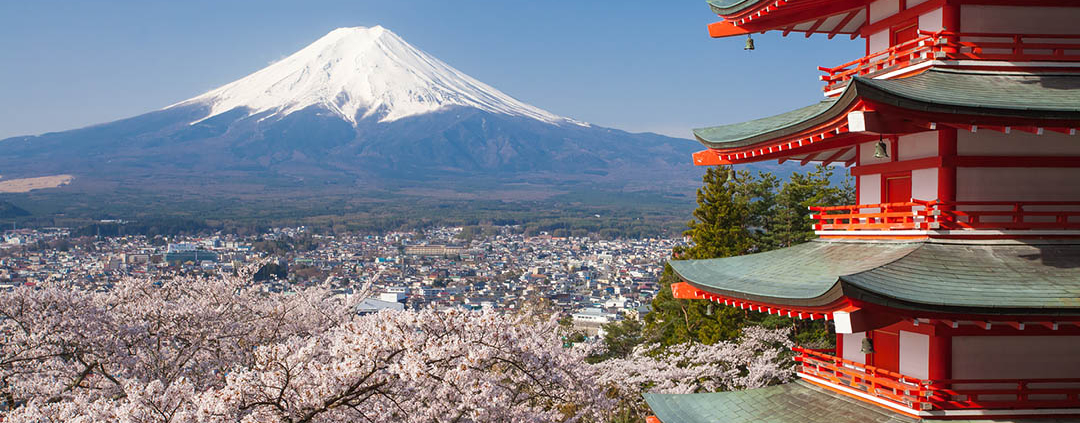5 Lessons We Can Learn From Japanese Web Design
This article is from Speckyboy Design Magazine, by Benedict Brychta. He is an experienced contributing blogger and also a beginner in web design. He is a big classic movie fan and loves to share his opinions on the film industry, marketing and inspiration. You can contact him via his Twitter or Facebook. Image courtesy Torsakarin via Bigstockphoto
Japan has its own particularities in terms of culture. As a result of several periods of isolation from the outside world, this millenarian civilisation has developed their own ways of expressing themselves through art, architecture and language. So it is understandable that this uniqueness has reflected inhow they create websites.
If you have had the opportunity to take a look at some of the most popular Japanese websites, you have probably noticed how different they are when compared to what is generally created by most Western cultures, and by many others Eastern cultures as well. Their websites are colorful, chock-full of text and images, and look quite confusing and overwhelming to us. And yet, there are quite few things we can learn from them.
Lesson #1 – Information Matters
In Japan, it isn’t acceptable to take any risk caused by a lack of information. Businesses are expected to let their clients know absolutely everything about their products and services, from specs to warranty. Each aspect must be described, demonstrated and explained, so the customer will know exactly what they are buying. It isn’t acceptable to try to trick the client into hiding aspects of the product, or only letting them know something when they ask.
Lesson Learned: Respect for the client is key. While we still don’t want to overwhelm the customer, all possible information about the product or service should be available somewhere on the web page, so that they can decide if they want to read further or not. To achieve this, you can add extra “Learn More” links to your website, or pages from where they can download PDFs with all of the products’ specs, for instance.
Lesson #2 – Details Matter
Japanese web design doesn’t follow the idea that “less is more“. There, the more elements you add to your website, the better it gets. You probably realize that this is a reflection of Japanese art, which are famous for their rich detail.
Lesson Learned: Being attentive to detail is more than just proofreading your website and ensuring that all links are functional. It is about making sure that you have carefully considered each element individually, and ensuring that all of those elements add value to the reader or buyer.
Lesson #3 – Colours Matter
The Japanese love for for bright colors, can be seen everywhere, not only on their websites. Even if you have never been there, the image that you picture of the streets of Tokyo is probably full of tall buildings with fluorescent and blinky ads. In the land of the rising sun, colors matter, and they are essential to Japanese web design for creating engagement between businesses and customers.
Lesson Learned: Colors aren’t there just to make your website beautiful. They can communicate and add subtle information. Plus, it is scientifically proven that colors can trigger emotions, so you should choose them wisely, and gain more knowledge about the psychology behind them – and not just their best combination.
Lesson #4 – Space Matters
Japan is an archipelago composed of 6,852 islands, but they altogether represent only 377,972,28 km2, with almost 130 million people living there. In other words, they have the 10thbiggest population in the world while only the 62nd largest territory. These stats make it completely understandable why space is so important, and as a knock on effect, why Japanese websites look so overcrowded. Every pixel is used and used well, and they clearly know how to make the most of it.
Lesson Learned: As a web designer, you should consider the importance of each pixel of your screen, and use it wisely.
Lesson #5 – Simplicity Matters
Despite using almost all available white space, the Japanese culture is fundumentally rooted in simplicity. So don’t be fooled by the vast number of elements that you can find on their websites. There web layouts may seem too much to our eyes, but all elements are there for a reason, and there really isn’t anything complicated about any of them. Each piece of content can be easily understood and consumed by their intended reader or buyer very easily.
Lesson Learned: Make it simple. People are very busy nowadays, and they don’t have the time or the patience to be rooting around for information. Improve your website’s user experience, and don’t try to add any non-essential features. This way, you will increase your traffic and the length of time that visitors will stay on your website.
Finished!
Even though Japanese web design seems so different to ours, it is possible to learn a lot from them. Japan does enjoy the 4th biggest GDP in the world (almost US$5 trillion), so rest assured that they do know how to conduct business, and build websites, effectively


